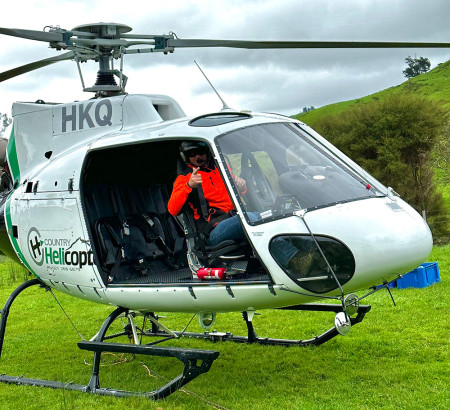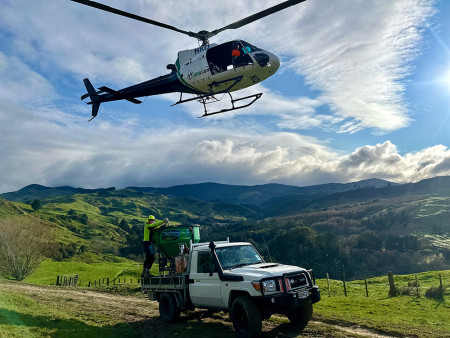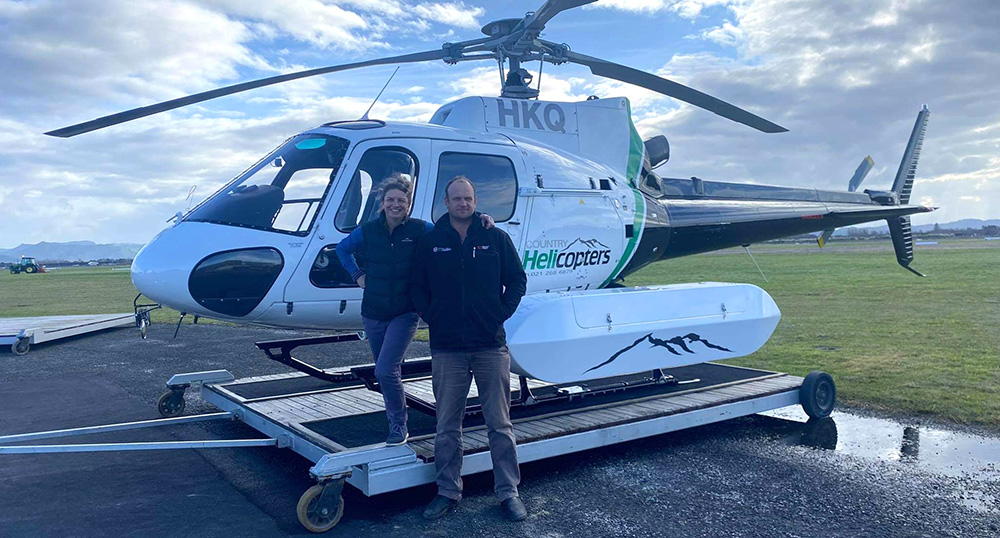An intense workload cost an owner-operator his medical. With a great support network, which included the CAA medical team, he got it back.
In the years even before Cyclones Gabrielle and Hale, rotary pilot George Spence was no stranger to stress, rapid company growth, multiple senior roles, young kids, and servicing high debt.
The Gisborne-based company owner says what had started, in 2017, as a three-person team that included his partner, Cleo, and one ground crew, grew quickly to 12 staff. Four aircraft were added to the original R44.
“We were very busy and it was a very stressful time,” George says.
But it was the cyclones that broke the camel’s back. Once the phones came back on line after the cyclones had moved through, they didn’t stop for months. Everything was of a new and prolonged intensity.
George says one evening he was returning to Gisborne, and had, what he discovered later, was a small panic attack.
“I learned this was my body sending me a message.’
Prior to this he’d never had any mental health concerns or issues with anxiety. The very concept of anxiety was completely foreign to him. He was ‘old school’ and says he “just got on with it”.
“But the day after I got this ‘message from my body’, I was walking to the Squirrel and was overwhelmed by a funny feeling.
“I only found out later this was more anxiety, due to burnout.
“I felt sick, dizzy, and not up to flying.
“There was no way I was going to hop in that helicopter.”
Telling the CAA
 George was worried that if he lost his medical, the business couldn’t carry on. He was also concerned about what people would think of him, losing his medical to something like anxiety.
George was worried that if he lost his medical, the business couldn’t carry on. He was also concerned about what people would think of him, losing his medical to something like anxiety.
“But I knew the way I was feeling, I couldn’t fly safely.
He talked to Cleo, who helped organise things in the business. He saw his GP, and spoke to his designated medical examiner.
“My medical examiner was great through the whole process. She was very approachable, very practical, and understanding of my position.”
Nevertheless, the examiner did suspend George’s medical, but the two of them sorted out a plan and a timeline to get him back flying.
“We notified the CAA medical team and they were also great, laying out the pathway for me to get better and get my medical back,” says George.
“I also kept in touch with Neil Dodds, who, as a CAA Flight Operations Inspector, had been calling on my company for some years.
“He helped me keep pretty relaxed and positive about the situation, and he reassured me I’d eventually get back into flying.
Pig-headed and impatient
 “I was very lucky to have my partner’s support, both at home and in the business,” says George.
“I was very lucky to have my partner’s support, both at home and in the business,” says George.
“And our Safety Manager, Pete Blake, who’s been through something similar, was another source of support. His mentoring helped pave the way back to flying for me.”
George says he can be pig-headed and impatient.
“I just wanted to get back to ‘normal’ instantly, but frustratingly, that was not the case.”
But, ironically, being grounded was not all bad.
“It allowed me to step back and work on the business side of things.
“I exercised more, changed my diet, got into hobbies, and spent more time with Cleo and the kids.”
George says that, very slowly, over several months, he started getting better, and with a couple of small flights, began to get his confidence back.
“And, just as everyone predicted, I did regain my medical and am back flying.
“I’m very grateful for the support I received, including from the CAA.”
A new approach
CAA Chief Medical Officer, Dr Tim Sprott, says his team has changed its approach to dealing with pilots and air traffic controllers, who feel lost in the ‘back roads’ with mental health and wellbeing concerns.
“There are risks to the safety of someone whose flying performance is affected by major life events or mental health concerns.
“The team understands how important it is to support pilots if they’re facing health issues.
“It’s not easy for anyone to lose their medical, but especially difficult if you’re a commercial pilot or hold senior person roles, or employ staff – because it’s your livelihood as well.
“So our focus is on building trust with pilots and getting them back to flying safely, as quickly as possible.”
Tim says the team will work with pilots, their medical examiners, health professionals, and the aviation peer assistance network, PAN NZ, to keep them flying.
“And the new ‘Safe Haven’1 programme is an example of how we’re further trying to support pilots and air traffic controllers back into their medicals.”
Tim says that while most pilots do report a medical condition, a large minority do not.
“We do understand why they don’t. But we want to do everything we can to support them to do so.
“We also want them to get the appropriate help from health professionals as early as possible.
“The risk to safety of someone with a significant heart condition or being distracted by major life events, flying in an unattended circuit, for instance, is what makes us keen for all pilots to self-report.”
George supports the medical team’s goal.
He says other pilots, who know in their heart that they should not be flying – for whatever reason – should share their concerns with the CAA, or a professional they trust.
“I know how hard it is to admit whatever is wrong with you makes you dangerous in the air.
“But ignoring it, hoping that if you don’t say anything, it will somehow go away, is absolutely the wrong thing to do.
“I wouldn’t love going through this again, but I realised it wasn’t the end of the world. And I’m glad I did what I did – it was the right thing in crappy circumstances.”

Cleo Rothschild and George Spence
Footnotes
1 The summer 2024 edition of Vector will include an article introducing the Safe Haven programme, a new way to report medical issues, but at a distance from the CAA.
Photos courtesy of Country Helicopters
